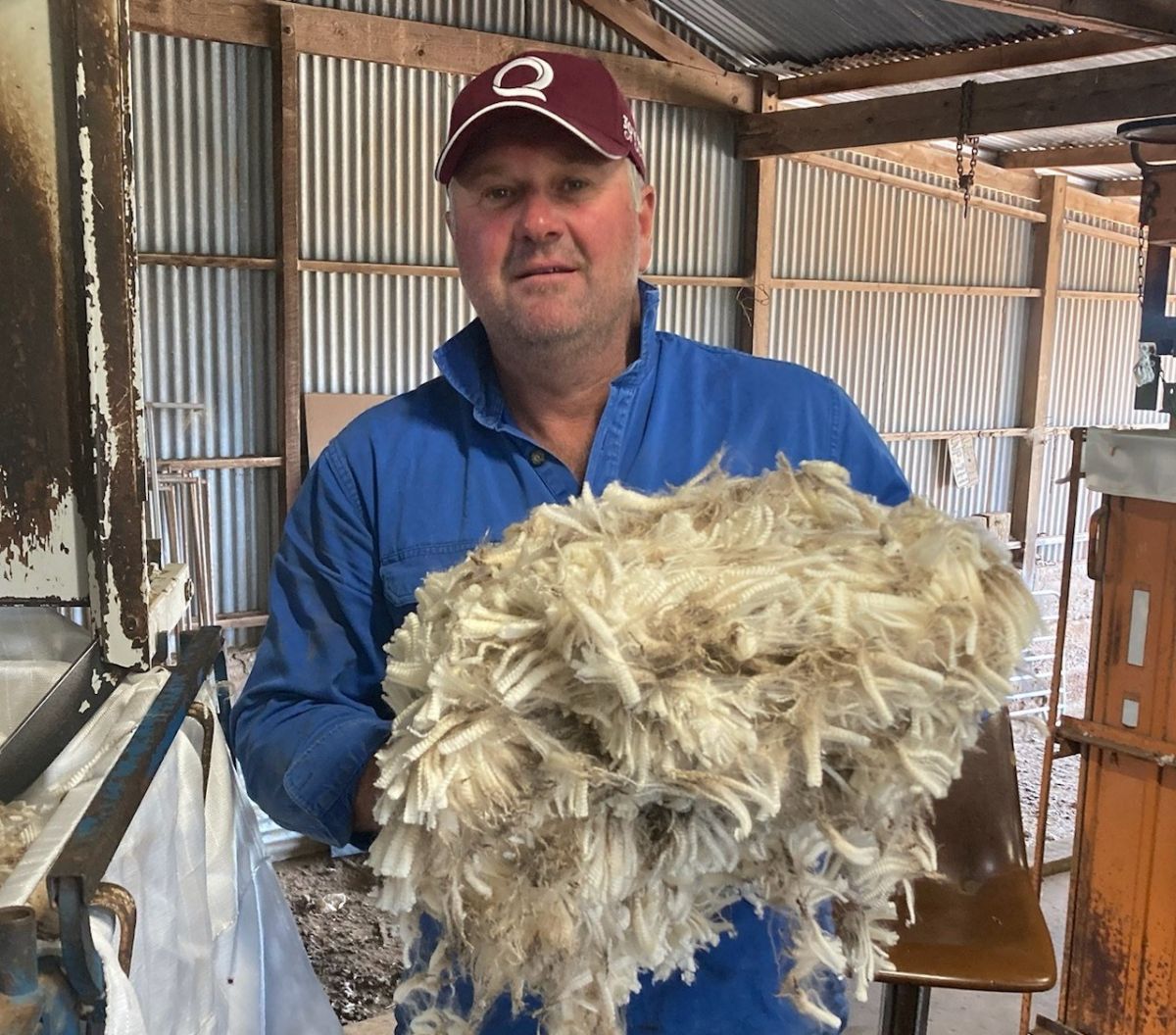EP flock premiums a bonus to animal welfare gains

MANY producers would agree that Malcolm Peters is one of the more passionate sheep farmers on the Eyre Peninsula.
And while decades of critical breeding selection and on‑farm sheep management, including data collection, are now paying handsome dividends for his family enterprise, that is not what drives him.
The Peters recently sold some of their wool at auction through
“Animal welfare, which will continue to come under attention, is the premium that you cannot put a dollar figure on,’’ he said.
“I’m not doing this for premiums in the bank balance. It’s better for the animals, the farm operation and myself. I know they are pain‑free and they will largely avoid flystrike. They are easy‑care.’’
Malcolm also is happy to share his passion, recently hosting a workshop attended by 20 local farmers on their journey to mules‑free sheep with Ken Duxson, the senior stud classer from where they have sourced rams for the past 20 years, Glendemar Multi Purpose Merinos at Marnoo in Victoria.
Malcolm and his wife, Karen, and eldest son, Claye, farm 4450 hectares over four locations north of Cleve. They run about 2000 breeding ewes under their own ‘Eyre Multi Purpose Merinos (MPM)’ brand, as well as 40 head of Hereford cattle, and crop 1820ha to wheat, barley, lupins and field peas.
Having ceased mulesing 13 years ago, Malcolm said mules‑free sheep was a “no‑brainer’’ and had been aided by continuously selecting for a “true’’ plain body Merino.
He said rather than sheep with thick skin and tightness of the skin, their aim was for thinner skin that reduced the percentage of primary fibres and prevented wrinkle and yellow wools.
“It’s an uncomplicated, true, wrinkle‑free Merino with nice, bright white, long wools. And it’s not that hard to achieve with your breeding and selection.’’
“With ram selection, it is as simple as going for a plain nose and a plain bum. Wrinkly noses transfers to wrinkle on the butt. And then also go on skin thickness and wool measurements including length.’’
Their careful breeding also has contributed to a 20‑year average lambing percentage of 117pc, including highs of around 130pc and lows of 110‑112pc, and Malcolm said he believed this could soon go to another level.
“We will look at our management of twin ewe mobs and mob sizes. There are recommendations for twins to be in mobs of 200, but we reckon singles should be 150 and twins
Electronic ear tags are used with all sheep and before hoggets have their first lamb, they are classed visually and three sets of data are collected, tracking their fleece weight and length, body weight and condition score. The only data collected after the first lambing includes their pregnancy status and condition score, of which is around 2.5 for a lot of the ewes.
The Peters’ major breeding objective with wool length has been to achieve 15mm of growth per month, equating to a 90mm fleece in six months. Most Merino sheep record about 10mm of growth per month.
Malcolm said it took 15 years to achieve that goal through the ram selection and due to the hoggets since growing out to more than 110mm during their eight‑month shearing intervals and consequently attracting a price discount, they were now shorn every six months.
Wool fibre diameter from the ‘Eyre MPM’ ewes averages 20.5‑21 microns, while the lambs average 18.5‑19 microns depending upon seasonal conditions.
The recent superior prices for the family’s wool were achieved by working closely with
Malcolm said RWS presented an opportunity for those producers who were carrying out procedures correctly and he was pleased
“There is a lot of paperwork, recordings and justification to provide, but
Quality Wool managed all of this with us and to ensure we have what is required for future auditing.’’
Malcolm has a strong relationship with local
“We sold 43 bales that were market valued at $66,000, and by selling it under RWS with
“Lawrence and